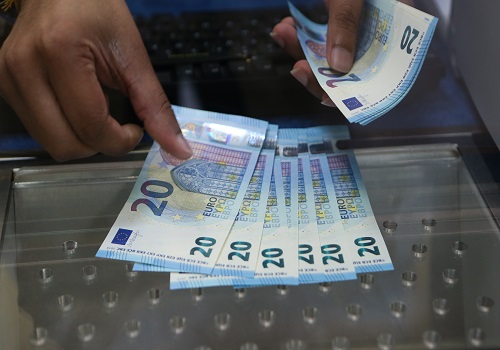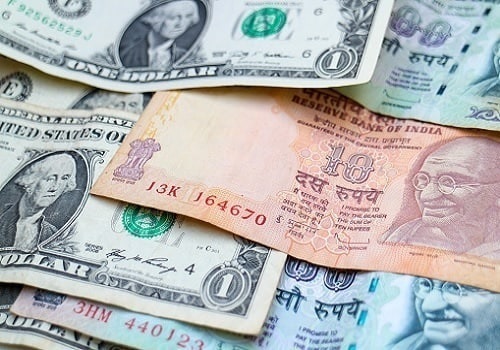Agri Commodity Technical Report 25 April 2023 - Geojit Financial Services

Follow us Now on Telegram ! Get daily 10 - 12 important updates on Business, Finance and Investment. Join our Telegram Channel
SPICES
* Spices complex on NCDEX was in red on Monday. Profit booking continued in jeera futures, while turmeric futures came under pressure from tepid demand. Coriander futures ended down in range bound trades
* India's export of spices during Apr-Jan declined 13% on year to 1.1 mln tn, according to data from the Spices Board India. In terms of value, the exports rose by 1.5% to 249.7 bln rupees. Export fell for chilli, small cardamom, jeera, coriander, and ginger. However, garlic exports rose sharply by 165% on year at 47,329 tn. While exports of jeera during Apr-Jan declined 18% on year to 154,782.6 tn, turmeric exports rose 8% on year to 136,492.6 tn. India exported 36,823.4 tn of coriander, which is down 11% on year, the data showed. Exports of small cardamom declined 23% on year to 6,447.8 tn. While large cardamom exports rose 8% on year to 1,541.8 tn. Exports of chilli in Apr-Jan were down 19% on year at 378,209.3 tn, while exports of other spices including as cinnamon, saffron, asafoetida rose 18% on year to 68,657 tn, according to the data.
* Spices Board said it had rescheduled the 14th edition of World Spice Congress from February to Sep 15-17. The congress is scheduled to be held at the CIDCO Exhibition and Convention Centre in Navi Mumbai. The rescheduling is due to constraints in international travel owing to the COVID-19 situation in some of the major spice importing countries. "The venue for the event will remain the same and all existing registrations of delegates and exhibition stalls will be carried forward to the rescheduled event," the board said.
* The value of India's spices market is expected to rise to 1 trln rupees by 2025 from 800 bln rupees this year, with the share of the organised sector likely to reach 50% from 38%, according to experts at the National Spice Conference. Currently, the value of the organised segment is pegged at 300 bln rupees. Improved quality, introduction of smaller stock-keeping units and increased shelf life of spices is one of the major reasons for growth of the organised segment, Ramkumar Menon, chairman of World Spice Organisation, said at the conference. Growth prospects in the case of spices are high and branding plays an important role, as it not only makes a memorable impression on consumers, but allows customers and clients to know what to expect from a company. It is a way to distinguish oneself from competitors and clarify what makes one a better choice, according to a panel of experts at the conference. Currently, the branded spices market is growing at a compounded annual rate of 10-15%, against 7-10% in the case of the unorganised segment. India, the world's largest producer, exporter, and consumer of spices, produces 75 of its 109 varieties. Around 85% of the spices produced in India are consumed domestically. The country accounts for more than 48% of global demand.

COTTON
* The Cotton Association of India has further cut its estimate for cotton production in India in the 2022-23 (OctSep) season by 1 mln bales (1 bale = 170 kg) to 30.3 mln bales, it said in a release. In March, the association had estimated India's cotton output at 31.3 mln bales, down from 32.2 mln bales projected a month ago.The total supply of cotton between October 2022 and March 2023 is now estimated at 22.9 mln bales. This comprises arrivals of 19.1 mln bales, imports of 650,000 bales and an opening stock of 3.2 mln bales at the beginning of the season, said Atul S. Ganatra, president of the association. Cotton consumption for Oct-Mar has been estimated at 14.9 mln bales, while export shipments till 31 Mar are estimated at 1.0 mln bales. According to the association, stock at the end of March 2023 is estimated at 6.9 mln bales, including 5.0 mln bales with textile mills and the remaining 1.9 mln bales with the Cotton Corporation of India, Maharashtra Federation, and others (multinational corporations, traders, ginners), which includes cotton sold but not delivered. Total supply of cotton during the 2022-23 season has been estimated at 35 mln bales, down from the earlier estimate of 35.7 mln bales.
* The US Department of Agriculture has scaled up its estimate for global cotton output in 2022-23 (Aug-Jul) to 115.9 mln bales (1 US bale = 218 kg) from 115.1 mln bales projected a month ago. Cotton production is expected to rise as higher production in China will balance out the reduction in Brazil's output, the department said in its World Agricultural Supply and Demand Estimates report for April. Cotton production in India in 2022-23 is seen at 24.5 mln tn, steady from estimates of the previous month. However, the output in Brazil is seen down by 300,000 tn to 13 mln tn. The agency sees global cotton consumption at 110.17 mln bales, up by 60,000 bales from projections in March due to higher demand prospects from China, which will offset the decline in Bangladesh and Brazil, the report said. Global ending stocks of cotton in 2022-23 are pegged at 92.01 mln bales, up from 91.15 mln bales projected last month. Consumption in India and Pakistan is estimated to be unchanged at 22.5 mln bales and 8.6 mln bales, respectively. The estimate for exports from India has been cut to 1.8 mln bales from 2.2 mln bales last month. Cotton ending stocks in India for 2022-23 are seen at 10.5 mln bales, higher than 10.1 mln bales projected a month ago, the report said.
* The National Commodity and Derivatives Exchange of India has announced modifications in parameters relating to trading of cotton on its platform. Among other things, NCDEX has changed the trading and delivery unit to 25 bales (170 kg) from the current 100 bales (170 kg). This modification has been introduced "in order to facilitate participation of small and medium size ginners and other market participants", it said in a release. Considering that Maharashtra is the second largest producer of cotton, and Akola is a major cotton trading centre, the exchange has announced Akola as an additional delivery centre for cotton. Currently, Kadi in Gujarat is the only delivery centre. The exchange also announced modifications in parameters such as staple length, colour grade, tolerance limit and premium or discount for delivery location differences. The modifications will be effective from Apr 11, NCDEX said.

OTHERS
• The National Agricultural Cooperative Marketing Federation of India has purchased 798,811.44 tn chana under the price support scheme in its rabi procurement operations, the agency said in a tweet.The number of farmers who benefitted in this procurement was 413,308 and a sum of 42.61 bln rupees was paid to them, the agency said. The government has set the minimum support price for chana at 5,335 rupees per 100 kg for the 2023-24 rabi marketing season. NAFED purchased chana in Telengana, Guajarat, Andhra Pradesh, Karnataka, Maharashtra, Madhya Pradesh, Uttar Pradesh, and Rajasthan in this round of procurement, it added.
• Agriculture and Agri-Food Canada has scaled down its estimate for chickpea prices in Canada for 2022-23 (Aug-Jul) to $1,035 per tn from $1,165 per tn projected in February. It has also lowered its estimates for mustard seed prices to $2,365 per tn from $2,525 per tn projected last month. In its March report, the farm agency said the average price of mustard seed is forecast to fall, but remain historically high due to expectations of increased carry-out stocks in Canada. The estimate for overall supply of chickpeas in Canada is unchanged from last month at 328,000 tn. The agency has also kept exports of chickpea steady at 200,000 tn. Similarly, estimates for overall supply and exports of mustard seed are unchanged at 177,000 tn and 115,000 tn, respectively. The agency left its price estimates for lentils, dry beans and dry peas unchanged from last month at $800 per tn, $1,165 per tn and $460 per tn, respectively. Canada is one of the biggest exporters of lentils to India. Agriculture and Agri-Food Canada is responsible for policies governing production, processing and marketing of farm, food and agribased products in Canada.
• According to 2nd Advance Estimates released by farm ministry, pulses output is seen at 27.8 mln tn in the ongoing crop year, as against 27.3 mln tn in the previous year. Chana output for 2022-23 is pegged at 13.6 mln tn compared with 13.5 mln tn in 2021-22. Tur output is seen at 3.7 mln tn compared to 4.2 mln tn in the final estimate of last year.
• Rabi chana sowing ends. The area under rabi chana across the country was at 11.2 mln ha , down 2% on year, data from the farm ministry showed. The decline was primarily due to lower sowing in Andhra Pradesh, Chhattisgarh, Jharkhand, Gujarat, and Madhya Pradesh. Sowing of chana across the country has ended for the rabi season. On a week-on-week basis, the total acreage rose 0.6% from 11 mln ha, data showed. In Maharashtra, the second-largest grower, chana was sown across 2.9 mln ha, up 9.6% on year. In Rajashthan, it was sown across 2.1 mln ha, up 4.9% on year. The acreage in Madhya Pradesh, the top grower, declined 11.1% to 2.2 mln ha. In Gujarat, it fell 31% to 765,000 ha, whereas it declined by 18.2% to 341,000 ha in Andhra Pradesh.
• India’s guar split exports increased in the month of Feb ’2023 by 19% to 4,420 tonnes compared to 3,711 tonnes previous month at an average FoB of US $1,843 per tonne in the month of Feb ’23 compared to US $1,936 per tonne previous month. However, the guar split shipments went down by 19% in Feb ’23 compared to the same period last year. Of the total exported quantity, 4,100 tonnes bought by China, US 260 tonnes and Switzerland 60 tonnes. India’s guar gum exports decreased in the month of February 2023 by 13% to 18,488 tonnes compared to 21,326 tonnes during previous month at an average FoB of US $1,558 per tonne in the month of Feb ’2023 as compared to US $1,482 per tonne previous month. Further, the gum shipments were marginally down by 0.1% in Feb ’2023 as compared to the corresponding year. Out of the total exported quantity, around 5,448 tonnes bought by USA, Russia 3,726 tonnes, Germany 2,552 tonnes, Canada 936 tonnes, China 740 tonnes and Australia 770 tonnes.

OIL AND OILSEEDS
* The National Agricultural Cooperative Marketing Federation of India has purchased 257,718.58 tn mustard seed under the price support scheme in its rabi procurement operations, the agency said in a tweet. As many as 126,622 farmers benefitted from this procurement and 14.04 bln rupees were paid to them, the agency said. The government has set the minimum support price for mustard at 5,450 rupees per 100 kg for the 2023-24 rabi marketing season. The National Agricultural Cooperative Marketing Federation of India purchased mustard in Haryana, Guajarat, Rajasthan, and Madhya Pradesh in this round of procurement, it added.
* India's oilmeal exports surged 138% on year to 575,958 tn in March, data released by the Solvent Extractors' Association of India today showed. The rise in exports was primarily on account of higher shipment of mustard meal, soymeal, and castor seed meal. In March, the country exported 248,063 tn mustard meal, significantly higher than 93,984 tn in the year-ago period. Exports of castor seed meal rose to 39,710 tn from 32,771 tn a year ago, and those of soymeal rose 885% to 235,233 tn. During Apr-Mar, the export of mustard meal rose to a record 2.30 mln tn against 866,407 tn in the year-ago period, and those of soymeal rose 174% to 1.02 mln tn. During Apr-Mar, South Korea imported 914,382 tn of oilmeals from India compared with 643,593 tn a year ago, while Vietnam imported 1.03 mln tn from India, against 609,666 tn a year ago, the association said. In Apr-Mar, 1.23 mln tn oilmeals were exported from Kandla port against 397,575 tn a year ago. About 1.36 mln tn were exported from Mundra port, up 99% from last year. Exports from Mumbai port, including Jawaharlal Nehru Port Trust, were at 405,776 tn against 165,163 tn a year ago. Around 417,339 tn of oilmeals were shipped from Kolkata port compared with 486,611 tn a year ago, along with 878,930 tn from other ports, up 42%, the association said.
* India's vegetable oil imports rose 6.1% on year to 1.17 mln tn in March, the Solvent Extractors' Association of India said on Friday. Vegetable oil imports in the first five months of the oil year beginning November were at 7.06 mln tn as against 5.80 mln tn a year ago, marking a rise of 21.8%. Meanwhile, edible oil imports for these five months were at 6.98 mln tn as against 5.64 mln tn a year ago. The vegetable oil basket consists of edible and non-edible oils. The edible oil import basket comprises crude and refined palm oils, crude soyoil, and sunflower oil. India imports palm oil from Indonesia and Malaysia, and soyoil from Argentina. Sunflower oil is imported from Ukraine and Russia. India is the world's largest importer of edible oils. As of Apr 1, about 978,000 tn of edible oil was at ports as against 565,000 tn a year ago. Around 2.5 mln tn was in the pipeline as against 1.6 mln tn in the same period last year, the Solvent Extractors' Association of India said.
* The Soybean Processors Association has scaled up its estimate for soybean output in the 2022 kharif season by 3.1% to 12.4 mln tn, it said in its final estimate released on Saturday. In October, the association had estimated the output at 12 mln tn. The association's final estimate for soybean output is lower than the government's projection of 14 mln tn. According to data by the farm ministry, the total area under the crop in the country is at 12.1 mln ha. However, SOPA has estimated this at 11.5 mln ha. The association has increased is estimate due to higher productivity. It sees soybean yield increasing to 1,084 kg per ha, compared with 1,051 kg per ha in the earlier estimate. In Madhya Pradesh, the largest producer of the oilseed in the country, production is pegged higher at 5.4 mln tn, against 5.3 mln tn the previous year. The yield in the state is seen increasing to 1,069 kg per ha from 1,051 kg per ha, the release said. The output in Maharashtra is seen higher at 4.9 mln tn, compared with 4.7 mln tn. The yield is seen rising to 1,134 kg per ha from 1,080 kg per ha. Other states growing soybean include Rajasthan, Telangana, Karnataka, Chattisgarh, and Gujarat. SOPA said a mid-term review of the estimates for the soybean crop in the 2022 kharif season was undertaken in March. "The revised estimates are based on the field survey carried out by teams of SOPA from 22nd March to 3rd April 2023, covering an area of around 7,000 km in 37 major soybean growing districts of Madhya Pradesh, Maharashtra, and Rajasthan," it said in the release. The field survey covered interaction with APMCs, farmers, traders, brokers, soybean processors, warehouses and stockists, it added. According to D.N. Pathak, executive director of SOPA, farmers are still holding about half their produce, hoping for a repeat of the higher prices seen in the last two years. They expect prices to hit around 7,000 rupees per 100 kg, against the prevailing price of around 5,000 rupees in many places.Soybean, the largest grown oilseed in India, is sown in Jun-Jul and harvested in Sep-Oct.
* The US Department of Agriculture has scaled down its estimate for global production of oilseeds in 2022-23 (May-Apr) to 625.4 mln tn from 629.9 mln last month. The agency projected global soybean output in 2022-23 at 369.6 mln tn, 6 mln tn lower than the estimate in March. Global soybean exports are also seen marginally lower at 168.0 mln tn compared with 168.4 mln tn last month mainly on lower exports from Uruguay, the agency said in its April report. In 2022-23, Argentina is seen exporting 3.4 mln tn of soybean, unchanged from the projection a month ago. Exports by Brazil and Paraguay are estimated at 92.7 mln tn and 6.4 mln tn, respectively. Soybean production in Brazil is estimated at 154.0 mln tn, up from 153.0 mln tn in March. Meanwhile, production in Argentina is estimated at 27.0 mln tn, down 6 mln tn from last month's projection. The agency has estimated soybean production in the US at 116.4 mln tn, unchanged from its projection last month. Brazil is the world's top producer of soybean, followed by the US and Argentina. The agency has scaled up its estimate for global ending stocks of soybean to 100.3 mln tn from 100 mln tn in March. "Soybean ending stocks are raised fractionally, with higher stocks for China and Brazil that are mostly offset by lower stocks for Argentina," the agency said. The estimate for global soyoil production in 2022-23 has been scaled down to 59.3 mln tn from 60.2 mln tn a month ago. The agency has revised its estimate for global soyoil exports in 2022- 23 marginally lower to 11.2 mln tn from 11.8 mln tn the previous month. The department has projected global soymeal output in 2022-23 at 247.6 mln tn, down from 251.4 mln tn in March. The agency estimates global exports of soymeal at 65.9 mln tn compared with 68.2 mln tn pegged last month. Soymeal, a derivative of soybean, is manufactured by crushing the oilseed and is mainly used in the production of poultry feed.
* India's soymeal exports in March rose 316.7% on year to 200,000 tn, the Soybean Processors Association of India said. For OctMar, soymeal exports increased to 999,000 tn from 474,000 tn in the previous year. The 2022-23 kharif season began in October. Soymeal is primarily used as poultry and livestock feed. Indian soymeal is non-genetically modified and considered rich in protein. In March, production of soymeal rose to 643,000 tn from 519,000 tn a year ago. The output for Oct-Mar was 4.8 mln tn, up from 3.4 mln tn in the year-ago period, SOPA said. Soybean arrivals in spot markets totalled 600,000 tn in March, unchanged against a year ago. During Oct-Mar, arrivals rose to 7.7 mln tn from 6.1 mln tn in the year-ago period. By the end of March, mills, traders, and farmers were left with around 7.1 mln tn of soybean stock, the association said. Soybean, a kharif oilseed, is sown during Jun-Jul and harvested in Sep-Oct.
* Production of crude palm oil in Malaysia fell 14.7% on month to 1.38 mln tn in January, data from the Malaysian Palm Oil Board showed. Exports of palm oil in January fell 23% on month to 1.14 mln tn, while those of biodiesel were down 5.1% on month at 14,239 tn, the data showed. Palm oil is also used to make biofuel. Total stocks of palm oil in the country were down 2.9% on month at 1.26 mln tn as of Januaryend. The production of crude palm oil in Malaysia rose 2.8% on month to 1.29 mln tn in March, data from the Malaysian Palm Oil Board showed. Exports of palm oil in March climbed 31.8% on month to 1.49 mln tn, while those of biodiesel surged 119% on month to 32,127 tn, the data showed. Palm oil is also used to make biofuel. Total stocks of palm oil in the country fell 23.2% on month to 891,653 tn as of March end. Malaysia is the world's second-largest producer of crude palm oil, and India is the largest consumer of edible oils in the world.
* India is likely to produce 11.5 mln tn of mustard in the 2022-23 crop year (Jul-Jun), 1.3 mln tn lower than the government's latest estimate, according to a recent crop survey conducted by The Solvent Extractors' Association of India. In 2021-22, India produced 12.0 mln tn of mustard, according to the data from the farm ministry. The association has estimated the country's mustard acreage at 9.6 mln ha, lower than the government's estimate of 9.8 mln ha last month. However, the acreage estimated by the association is up almost 5% on year. Mustard is one of the main crops grown in India during the rabi season. The normal area under the crop is 6.3 mln ha. Production of the oilseed is estimated to be the highest in Rajasthan at 4.5 mln tn, followed by Madhya Pradesh at 1.8 mln tn, and Uttar Pradesh at 1.7 mln tn. The association will conduct its third and final field survey in Apr-May, according to a release.
To Read Complete Report & Disclaimer Click Here
For More Geojit Financial Services Ltd Disclaimer https://www.geojit.com/disclaimer
SEBI Registration Number: INH200000345
Views express by all participants are for information & academic purpose only. Kindly read disclaimer before referring below views. Click Here For Disclaimer










Tag News

We anticipate immense potential benefits from the upcoming Sovereign Gold Bond Tranche in FY...
More News

MCX gold prices are expected to correct towards 51,000 level - ICICI Direct












